Key in a search term below to search our website.
Key in a search term below to search our website.
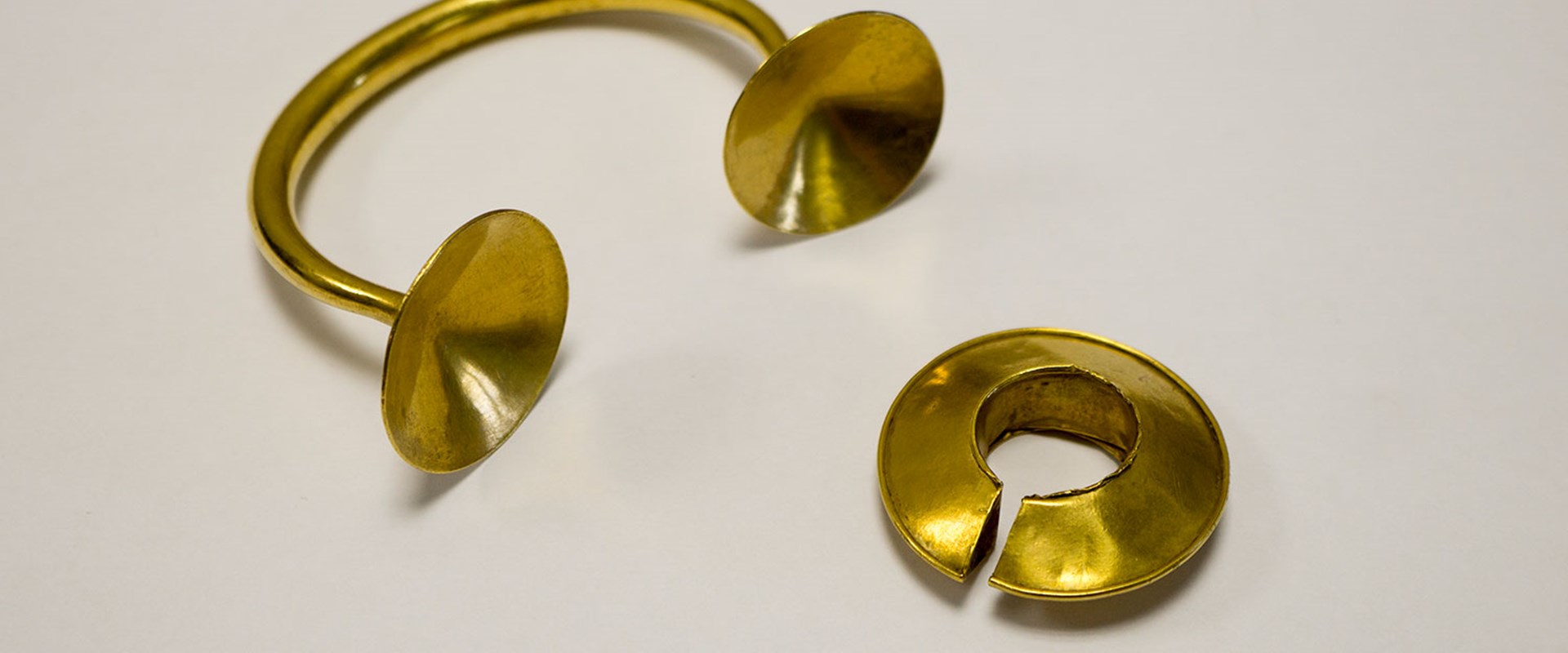
This week we feature a Late Bronze Age hoard, comprising a gold cup-ended ornament and a gold penannular ring or ‘lock-ring’. The hoard, which dates to around 1000-800 BC, was found in 1921 close to Whitefarland Point, on the north-west coast of the island of Arran, which sits in the south-west of Scotland between the Kintyre peninsula and the Ayrshire coast.
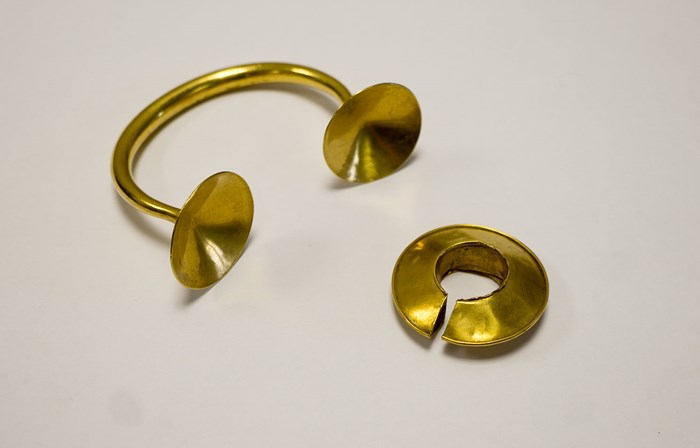
The Whitefarland gold objects (Reproduced courtesy of Glasgow Museums).
The cup-ended ornament was discovered by the farmer’s son when he was extracting material for building a new house at Whitefarland Farm. He found the gold object around two feet underneath some stone slabs which lay close to the foot of the old sea cliff to the south of the farm steading. The cup-ended ornament was sent to a jeweller in Glasgow, who showed it to several people, including the archaeologist and collector Ludovic McLellan Mann. Never one to miss out on an exciting archaeological discovery, Mann (and associates) wasted no time in visiting the findspot to investigate further, and as a result found the gold lock-ring and over twenty fragments of Bronze Age pottery at the site.
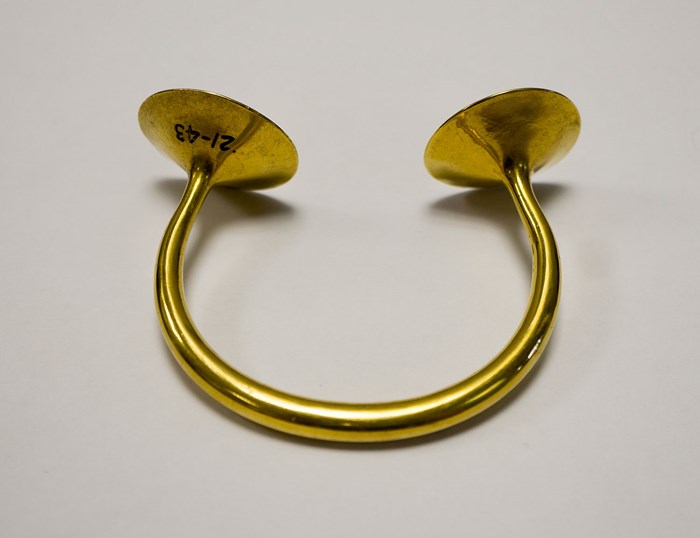
The Whitefarland cup-ended ornament (Reproduced courtesy of Glasgow Museums).
The cup-ended ornament, which could have been worn on the arm or used to fasten a garment such as a cloak, is of a similar form to the example from Skye which has already featured in this series. However, the example from Whitefarland has a wider body in the middle and tapers on each side towards the point where it is attached to the terminals, which are undecorated. It weighs around 94g. As discussed previously in this blog series, the Scottish distribution of findspots for this type of object is mostly in the west of the country.
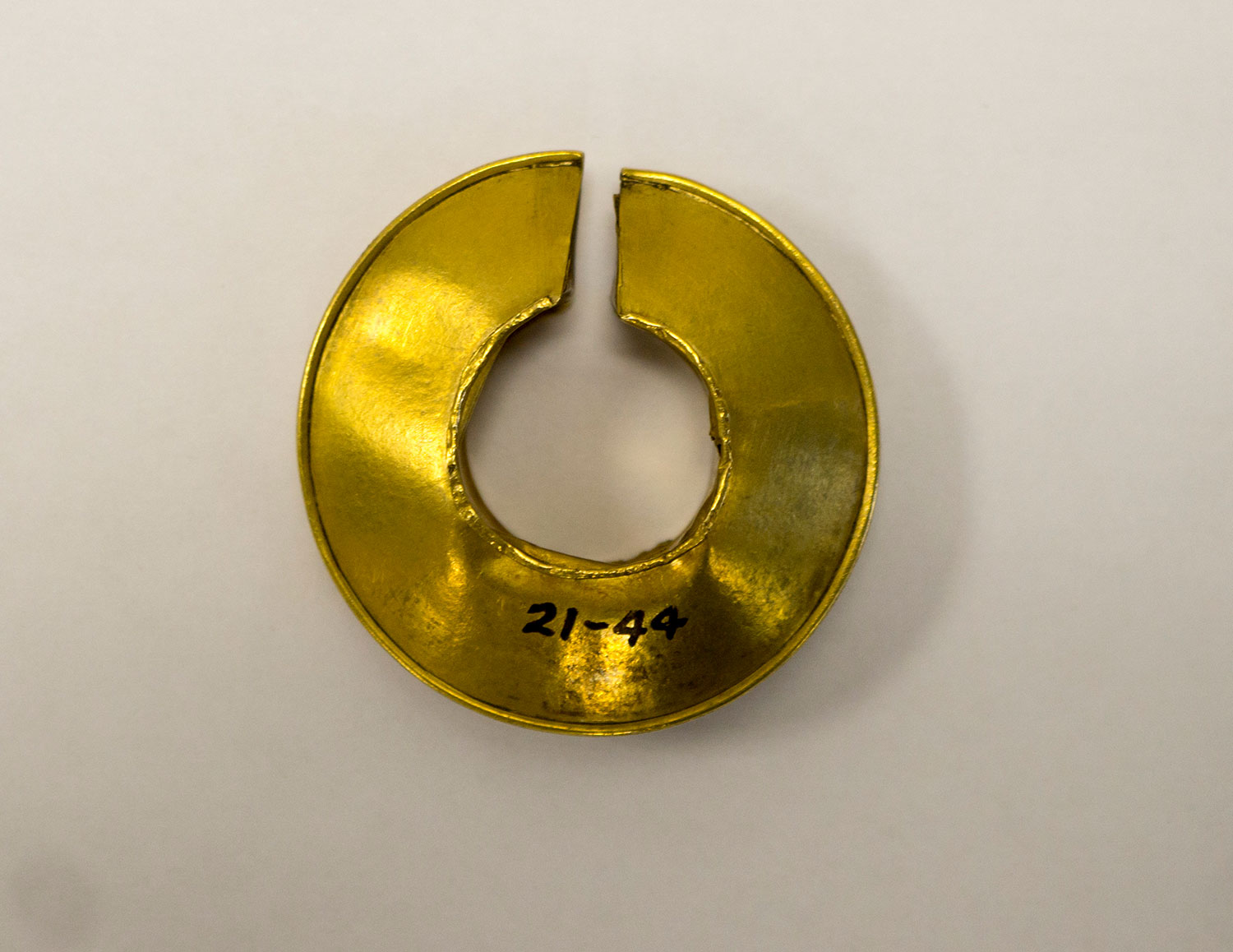
The Whitefarland lock-ring (Reproduced courtesy of Glasgow Museums).
The penannular ring is triangular in section, and is made of three main plain plates of gold soldered with a binding strip at the edges. It is hollow and weighs just over 7g. It may have been worn in the hair, or could have adorned clothing, but we still have much to learn about the purpose of these rings. In Scotland, examples of this type of object have been found mainly in the south of the country, with a fairly even distribution between west and east.
The pottery fragments found at the site are from two vessels, which both appear to be of Late Bronze Age date – the same date as the gold objects. Both vessels have a sooted interior; evidence that something was once burnt inside them. From the few small potsherds discovered, and assuming that all of the fragments were actually recovered from the site, it is clear that the two vessels were not complete when they were buried. The potsherds may either have been deliberately buried in association with the gold objects, or accidentally included in the material which was put on top of the gold objects when they were being buried. It is not clear from Mann’s published account as to where exactly the potsherds were found at the site, so it is difficult to say anything further about their context.
There are parallels for the association with pottery though. Most notably, at Duff House, Banffshire, a group of two gold bracelets and three small gold rings were found within a cremation urn. It remains possible that Whitefarland may have been a similar situation.
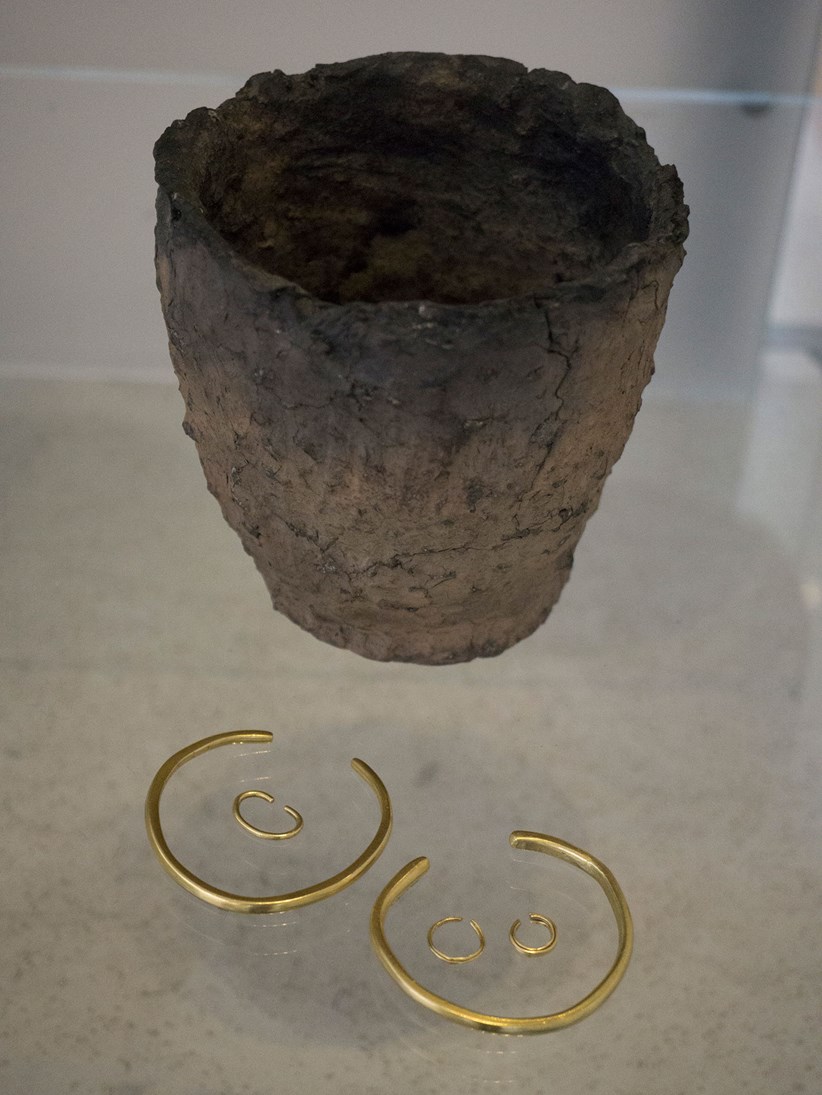
The gold bracelets and rings found in a pottery vessel near Duff House, Banffshire.
The two types of gold object found at Whitefarland are mainly found in Ireland, which is only a short distance away from Arran, and the combination of these types of objects being found together is unique in Scotland to date. Were these gold items in the hoard obtained from Ireland as part of a gift or exchange? Or did they belong to people who had moved from Ireland to Arran? Whatever the answer, they are undoubtedly evidence of the close links between the two areas in the Late Bronze Age.
Lastly, the person or people who owned these exceptionally well-made objects must have been of high status. Their ability to procure, possess, wear, and then deposit these valuable and beautiful items in the ground reflects the power that they held in their community. We will probably never know whether the gold objects were buried for safekeeping, or as a religious or ritual act. We can just be thankful that the farmer’s son chose that spot in which to dig in February 1921 and started off a series of events which brought these wonderful objects back into the public realm for us all to enjoy.
The cup-ended ornament and penannular ring are currently on display in the Scotland’s First Peoples Gallery at Kelvingrove Art Gallery & Museum in Glasgow.
By Jane Flint, Curator of (Prehistoric) Archaeology, Glasgow Museums